Once a bustling city on the Gulf of Naples, in Italy’s Campania Region, Pompeii is best known as the city buried by heaps of volcanic ash when Mount Vesuvius erupted in 79 AD. After its burial in 79 AD, modern humans have been unearthing the ancient Roman city of Pompeii to learn more about it.
This ancient city was built about 40 meters above sea level on a coastal lava plateau that was created by earlier eruptions of Mount Vesuvius. The ancient city bordered the coastline, covered a total of 64 to 67 hectares, and judging by the household count it was home to 11,000 to 11,500 people. It boasted a complex water system, amphitheater, gymnasium, and even a port.
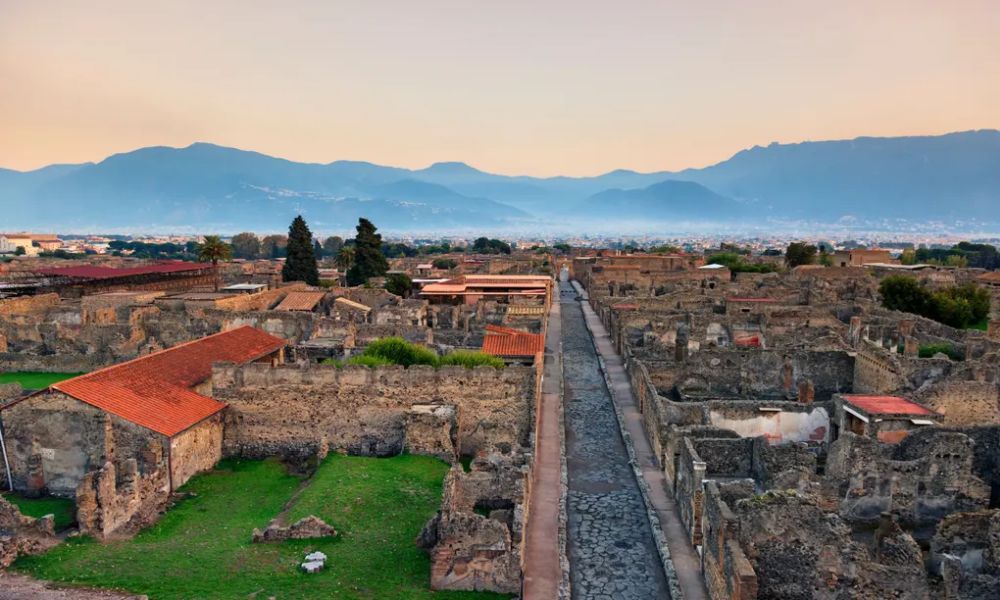
The ruins of Pompeii | Image: Michele Falzone
However, all of it was buried in millions of tons of volcanic ash in 79 AD. Two thousand people perished and the city was abandoned for almost as many years. In 1748, a group of explorers rediscovered the site and were surprised to find that underneath a thick layer of dust and debris Pompeii was mostly intact.
The destruction of Pompeii, and the neighboring coastal town of Herculaneum, is undoubtedly history’s most storied natural disaster. The buildings, artifacts, and skeletons left behind in the buried city have helped in teaching a great deal about everyday life in this ancient city. Today, it is a UNESCO World Heritage Site and is one of Italy’s most popular tourist attractions with around 2.5 million tourists a year.
The Ancient Roman City
Even though best known for its Roman remains visible today dating from 79 AD, it was developed upon a significant city dating from much earlier times. The first established settlements on the site date back to the 8th century BC when the Oscan, a population of central Italy, founded five villages in the region.
Soon after the Greek settlers made the city part of the Hellenistic influence. In 524 BC, the Etruscans arrived and settled in the area. Alike the Greeks, the Etruscans did not conquer the city militarily but controlled many aspects of the city. Under the Etruscans, a primitive forum or simple market square was constructed, as well as the Temple of Apollo.
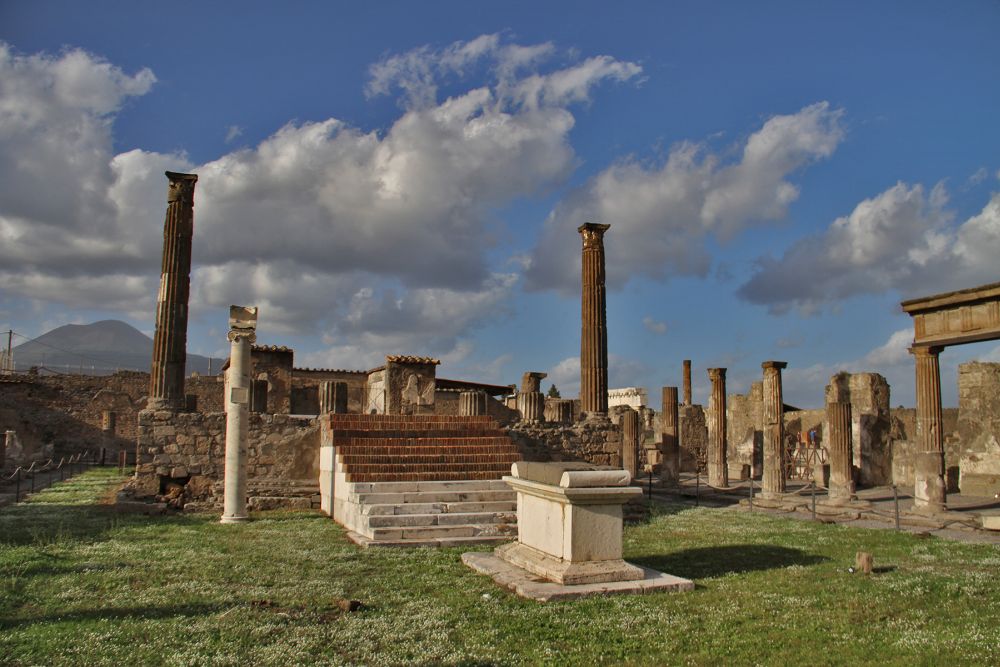
The ruins of the Temple of Apollo in Pompeii | Image: Markos90/Wikipedia
An independently-minded town, Pompeii fell under the power of Rome in the 2nd century BC, and eventually, the Bay of Naples became an attraction for wealthy travelers from Rome who enjoyed the Campania coastline. By the turn of the first century AD, the town of Pompeii was a thriving resort for Rome’s most renowned citizens.
The city had elegant houses and elaborate villas lined with paved streets. Tourists, townspeople, and slaves poured in and out of small factories and artisans’ shops, taverns and cafes, and brothels and bathhouses. Scholars estimate that there were about 12,000 people living in Pompeii and almost as many in the neighboring areas on that unfortunate day when Vesuvius erupted in 79 AD.
79 AD Eruption of Mount Vesuvius
Campania Region was habitual to frequent earth tremors, according to Pliny the Younger, the sole eyewitness who accounted for his experience of 79 AD eruption. The inhabitants of Pompeii have long been used to minor earthquakes, but on 5 February 62 AD, a severe earthquake rocked the region rather terribly, doing heavy damage to Pompeii, and its neighboring cities of Herculaneum and Nuceria were heavily affected. Even after 17 years, these cities were barely recovered from the destruction by the earthquake when the Vesuvius eruption buried them under 4 to 6 meters of volcanic ash and pumice.
Based on the recovered evidence from the archaeological sites of Pompeii, experts believe that the eruption took place in the autumn of 79 AD. Mount Vesuvius violently spewed forth a deadly cloud of lava and gases to a height of 33 kilometers, ejecting molten rock, pulverized pumice, and hot ash at 1.5 million tons per second. The eruption ultimately released 100,000 times the thermal energy of the atomic bombings of Hiroshima and Nagasaki. The eruption is considered one of the deadliest in European history.
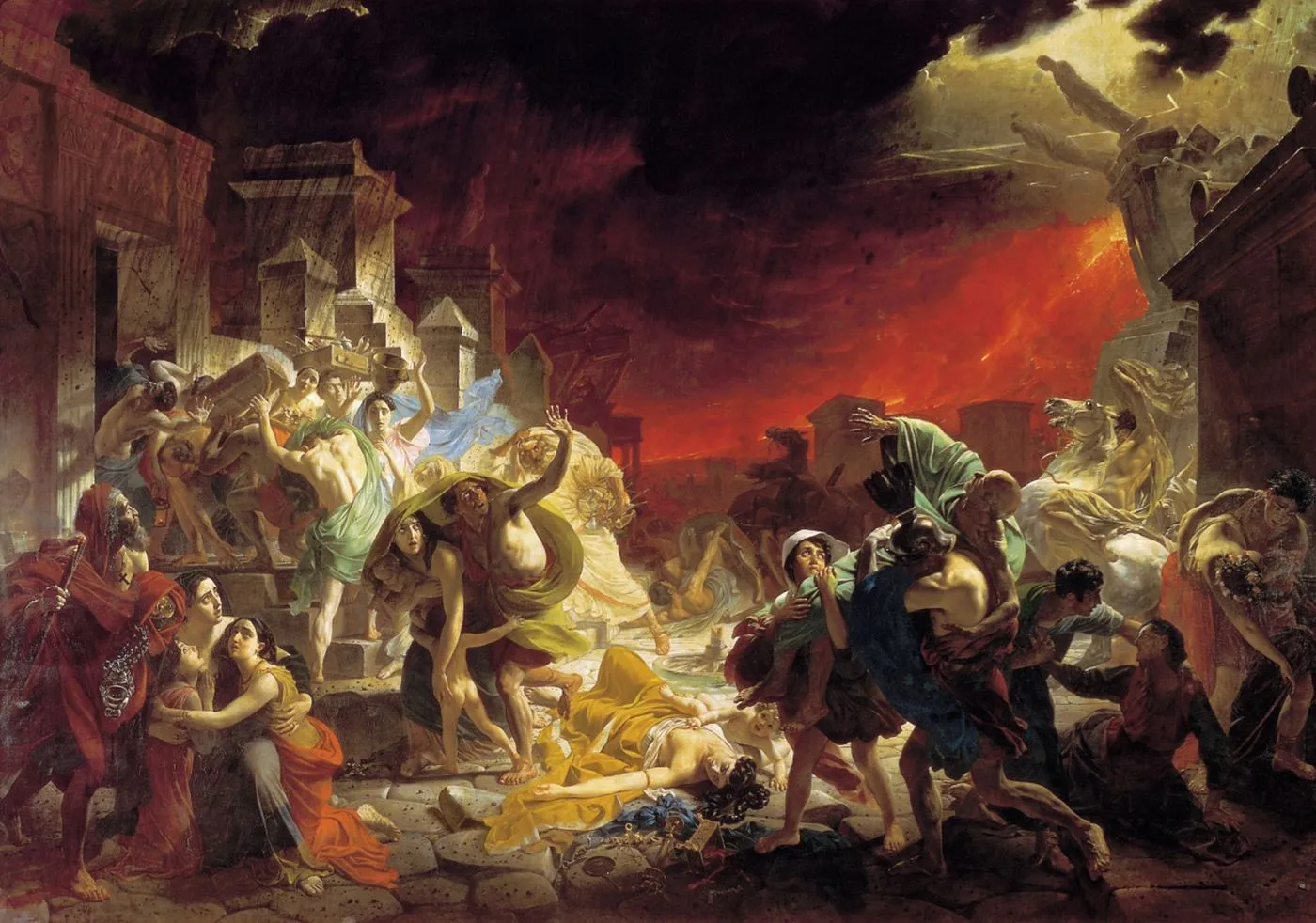
Karl Brullov’s painting The Last Day of Pompeii (1830–1833) | Image: Karl Brullov
Pliny the Younger described his firsthand account of the eruption of Mount Vesuvius from his position across the Bay of Naples at Misenum. His uncle, Pliny the Elder, was an admiral of the Roman Imperial Navy, died while attempting to rescue stranded victims. Pliny the Younger’s description of the eruption compared this “cloud of unusual size and appearance to a pine tree that rose to a great height on a sort of trunk and then split off into branches”; today, geologists refer to this type of volcanic eruptions as “Plinian.”
As the cloud of hot ash cooled, it began showering down on earth. The fine-grained ash and lightweight pieces of pumice and other rocks started raining down; however, it was not yet lethal, giving Pompeiians plenty of time to flee.
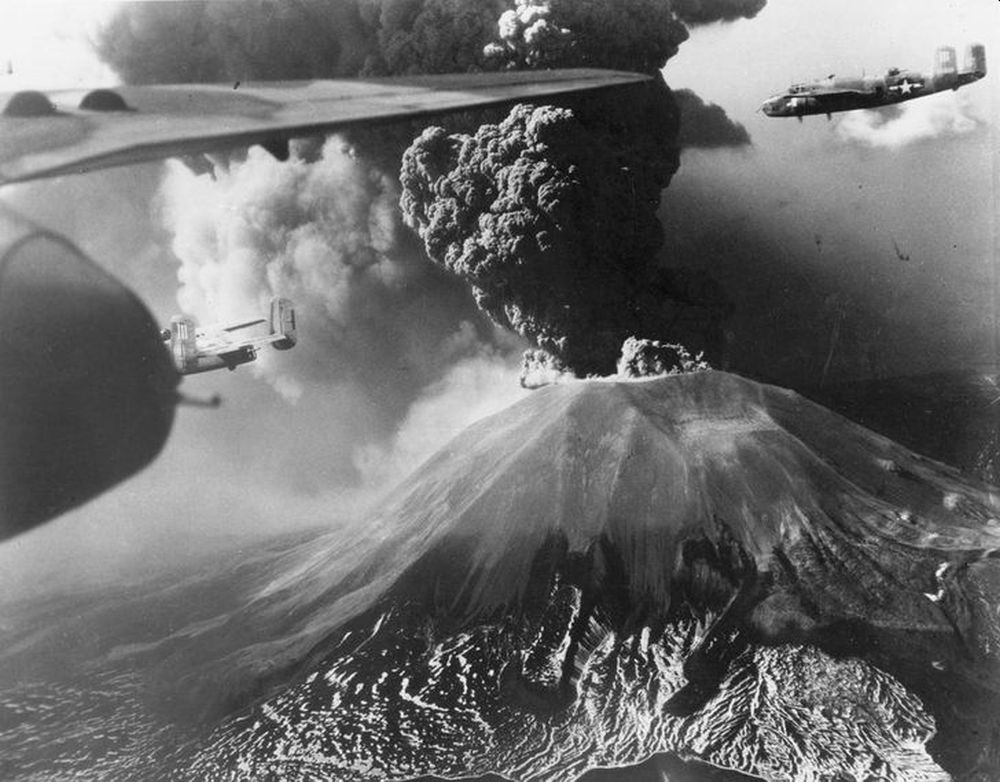
The last eruption of Mount Vesuvius was in March 1944, during WW II | Image: U.S. Air Force/Wikipedia
For those who stayed behind, seeking shelter inside their houses, the conditions worsened soon. As more and more ash dropped, buildings fell and the air started to clog with toxic fumes and suffocating those around. Then, a pyroclastic surge of superheated poison gas and pulverized rock-poured down the side of the mountain and engulfed everything and everyone in its path.
By the time the Vesuvius eruption came to an end the next day, Pompeii was buried under millions of tons of volcanic ash. About 2,000 Pompeiians were dead, but the eruption took as many as 16,000 humans lives overall. Pompeii, along with the neighboring town of Herculaneum which suffered the same fate as Pompeii, was abandoned for centuries.
Pompeii: A City Frozen in Time
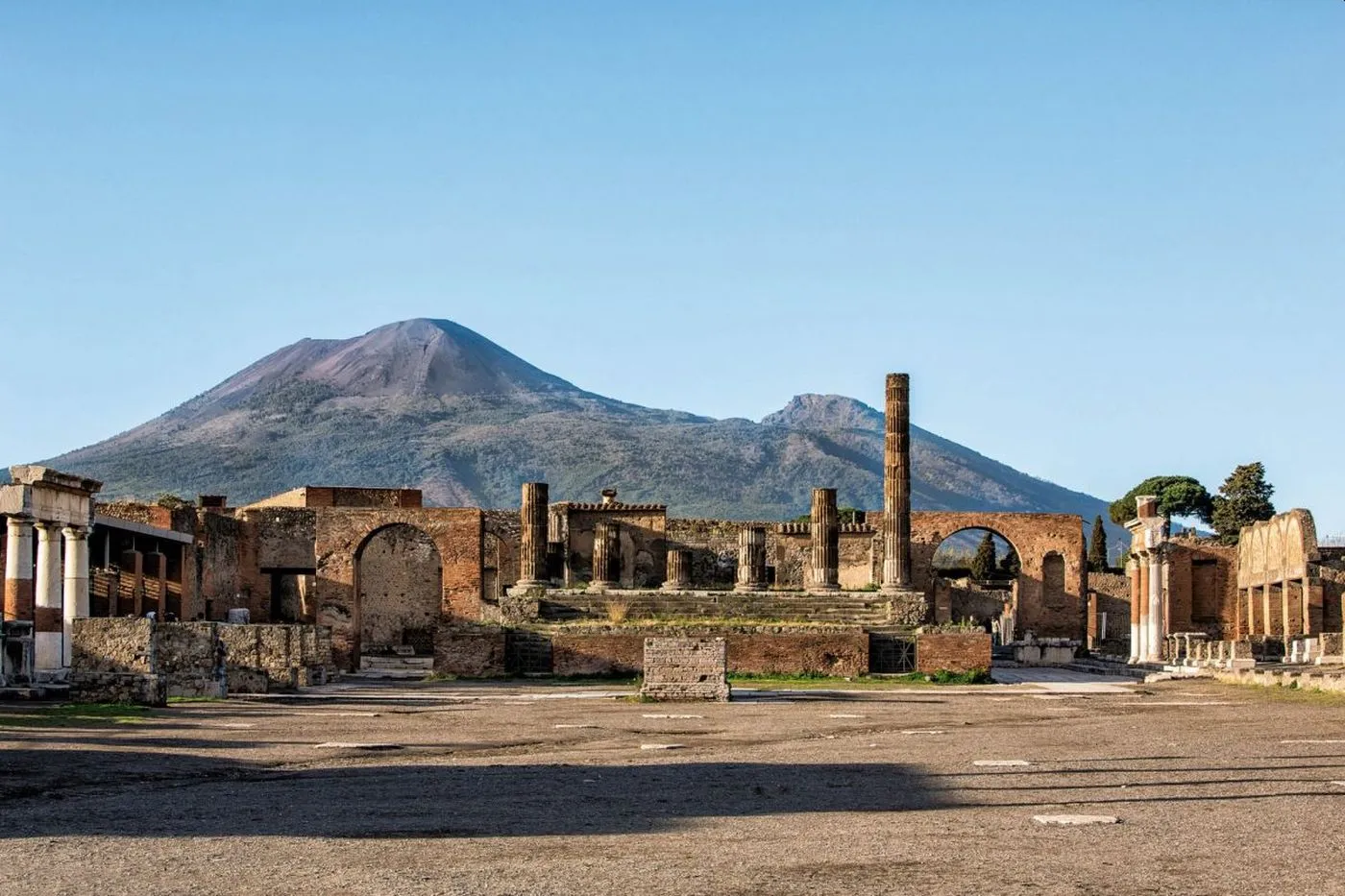
Forum at Pompeii with Vesuvius in background | Image: Pompeii Sites
The doomed city of Pompeii is perhaps best known for the volcano eruption that turned it into ash and dust almost 2,000 years ago. The city was buried beneath several feet of ash and pumice after the volcanic eruption, preserving it for almost 2,000 years as the lack of air and moisture allowed little to no deterioration.
Organic remains, including wooden objects and human bodies, were entombed in the ash and remained so for centuries. Titus, the Roman emperor from 79 to 81 AD, appointed two ex-consuls to organize a relief effort while donating large sums of money to help the victims. He twice visited the city after the eruption, but no work was carried out to recover Pompeii.
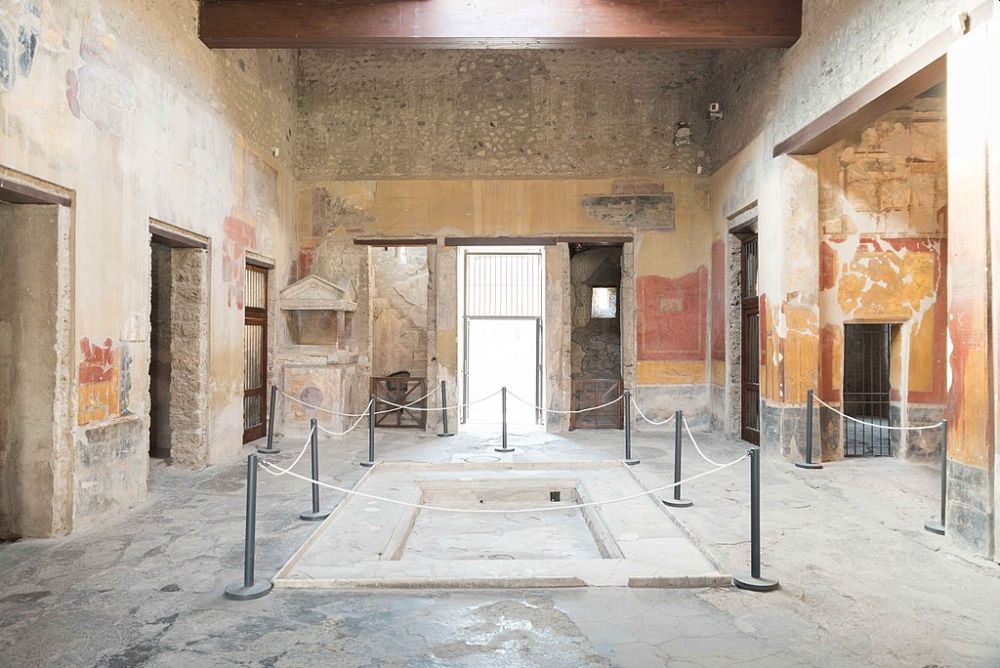
Atrium of the Casa del Menandro, which is one of the richest and most magnificent houses in ancient Pompeii in terms of architecture, decoration, and contents | Image: Nik893/Wikipedia
According to various hypotheses, soon after the burial of the city, survivors and plunderers must have come to salvages valuables, and possibly took the marble statues from the forum and other precious material from buildings.
Over the following centuries, its name and location were all but forgotten. Pompeii was basically lost in time until it was rediscovered in the 18th century. Herculaneum was also rediscovered around the same time by the workmen digging for the foundations of a summer palace for the King of Naples.
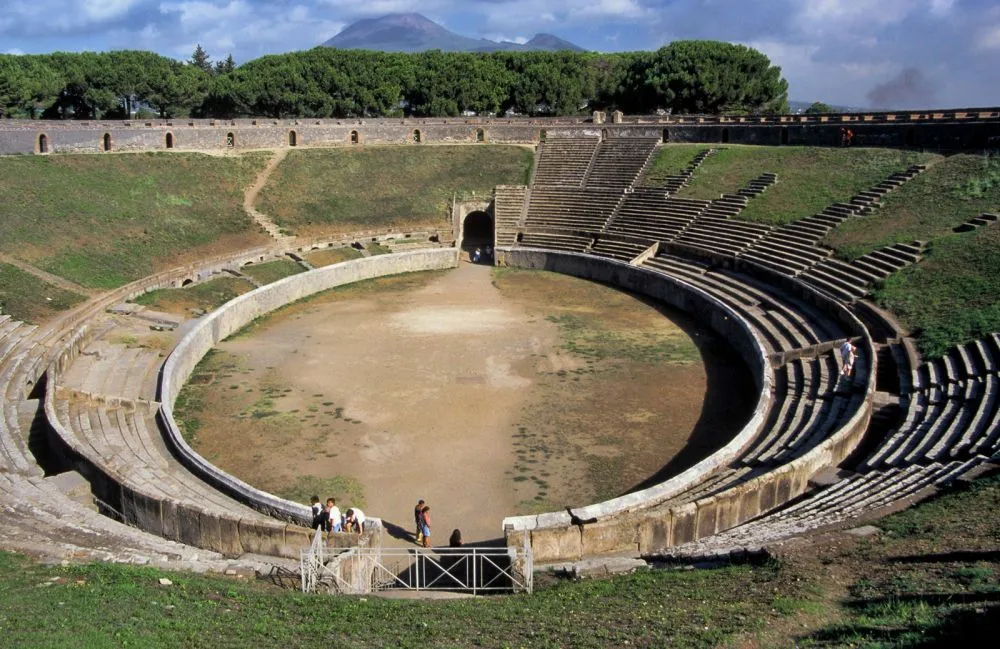
Amphitheater in Pompeii | Image: Victor Ovies Arenas
By encasing objects like amber traps a moth, the fine-grained volcanic ash that smothered Pompeii proved to be a remarkable preservative. Thanks to excavations that are still going on today, archaeologists have been able to gather much information about Pompeii and exactly what happened on that unfortunate day.
Unearthing of Pompeii
With the advances in the science of archaeology, it became a little easier to dig up the buried city. Largely preserved under the ash, the archaeologists have been rediscovering Pompeii. The excavations over the years have offered a unique glimpse of Roman life, frozen at the moment it was buried. However, once exposed, Pompeii has been subject to both natural and man-made forces, which have rapidly deteriorated the site.
Weathering, soil erosion, light and air exposure, water damage, poor excavation techniques and reconstruction, tourism, vandalism, and thefts have damaged the site in one way or the other. Moreover, during World War II many buildings were badly damaged or destroyed by bombs dropped in several raids by the Allied forces. Two-thirds of the city has been excavated, but the remnants of the city are rapidly fading away.
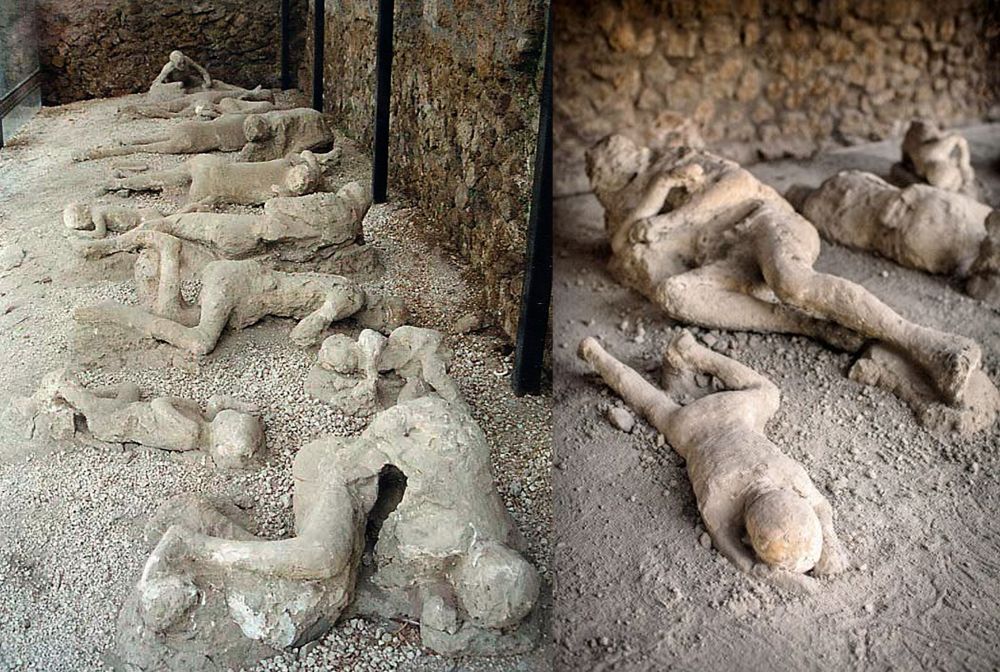
Remains of people who could not get out of Pompeii on time, contorted and frozen in time | Image: Lancevortex/Wikipedia and Pompeii Sites
The Roman cities of Pompeii and Herculaneum were buried beneath layers of volcanic rock and ash, until their rediscovery and exploration in the 18th century. Early excavators didn’t care much about the findings, and much was either misplaced, lost, or broken.
Over the past few years, archaeologists have been unearthing the buried city of Pompeii and have discovered many new things. Many corpses were found in positions indicating they were fleeing the city with their valuables holding close. The extremely pyroclastic surge has incinerated every single thing in its path within seconds. In the public market area, archaeologists have found glass jars with fruits still in them. An oven in an excavated bakery was found to contain 81 carbonized loaves of bread.
Every year, many human remains are discovered in the area. In November 2020, the remains of two men, who were thought to be a rich man and his slave, were discovered in a two-meter-thick layer of ash. Another significant find of 2020 was the Pompeiian thermopolium – a fast-food place where hot and cold meals and drinks were served – containing eight terracotta containers.
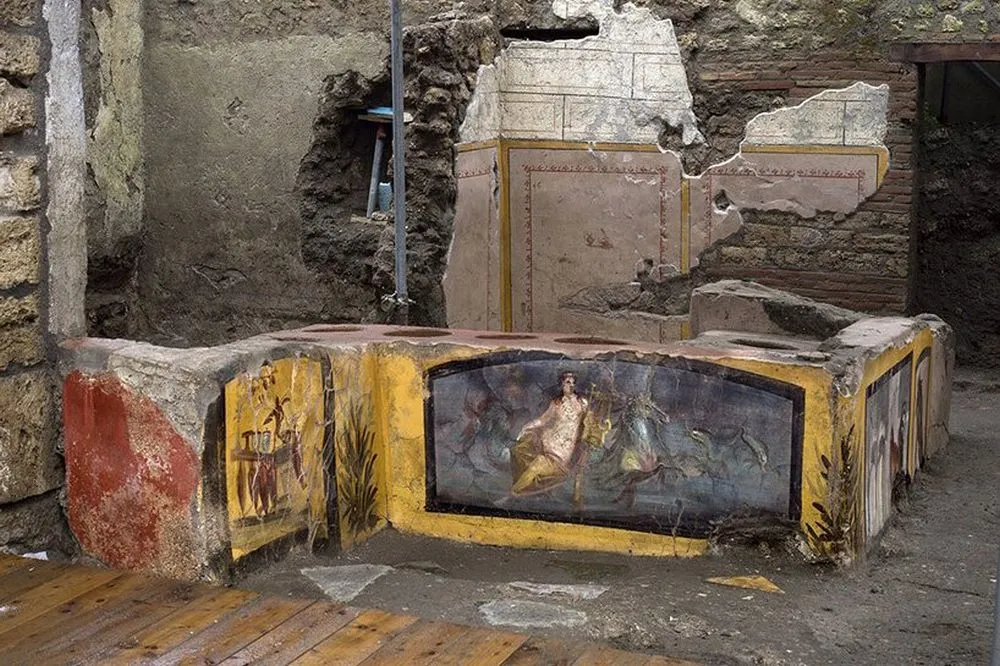
The Pompeiian thermopolium | Image: Archeologico di Pompeii
In addition to brightly colored frescoes, archaeologists have discovered about 2,000-year-old foods preserved in some of the deep terracotta jars, drink shops, a decorated bronze drinking bowl, wine flasks, and ceramic jars used for cooking. Apart from human settlements and remains, the skeleton of an “extremely small” adult dog was also discovered in the unearthing of Pompeii, along with the remains of a few horses, still saddled.
The most recent discovery is the four-wheeled ceremonial chariot, near a stable where three horses were unearthed in 2018. A lot of graffiti was also preserved in the blank, mostly windowless Pompeiian houses. Several inscriptions salute local gladiators. Many pieces of armors were also discovered in the gladiators’ barracks, along with assorted weaponry.
A Fading Treasure
The weather-beaten city is slowly fading away in time. Pompeii had been preserved under the volcanic ash and lava for two millennia, but as the humans began digging the site for information, it started to decay. The structures are not stable and have been collapsing one after the other. The present-day remains from Pompeii have been filled with plaster to immortalize the agonized figures of contemporary humans and put in museums.

Excavated and recovered house of Gnaeus Poppaeus Habitus | Image: Buzz Ferebee/Pompeii Sites
Pompeii remained intact and preserved for nearly 2,000 years under the volcanic ash that destroyed it in the first place, however, it is being steadily worn away by modern woes. Decades of neglect, millions of tourists impacting the site, and the ravages of sunlight and rain are threatening to wipe out this precious historical site.
Archaeologists and art historians have long complained about the poor upkeep of Pompeii’s ruins, warning that its frescoes are fading, roofs are leaking, walls are crumbling, and it won’t survive the test of time for long if massive preservation efforts are taken by the authorities.
However, much has been learned from the unearthing of the ancient Roman city of Pompeii, which must have been a remarkable place to live in – with a beautiful location, art, and architecture – judging by its ruins. While archaeologists have been trying hard to slow the decay and degradation of this historically-rich place, we might end up losing the ruins of Pompeii.